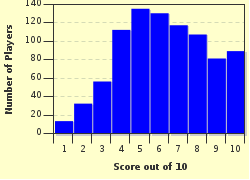Quiz Answer Key and Fun Facts
1. Following the German invasion of Poland on 1 September 1939, France and Great Britain declared war on Germany on 3 September 1939. When did Canada go to war against Germany?
2. In which of these capacities did Canada contribute during the early years of the War?
3. The first major engagement that Canadian soldiers faced in the Second World War was the defense of a British colony overseas. Which one?
4. In 1939, a ship of Jewish refugees from Germany that had originally sailed for Havana appealed to the Canadian government to let them make harbour in Canada. The Jews had been denied entry to Cuba and the United States, and were turned away by Canada as well. What ship was this?
5. Which of these industries on the home front was especially important for the Allied war effort?
6. Canadians were the main assault force during Operation Jubilee. Where did this raid take place?
7. One thing that makes the Second World War significant for the USA was that, unlike in the First World War, the enemy showed up at their front door with the Japanese attack on Pearl Harbour. Did Canada also face foreign aggression at home?
8. Canada did not use conscription during the Second World War.
9. Canadian troops were very involved in the Italian campaign following the Allied invasion of Italy in 1943, continuing through to the end of the war. In which location did the 1st Canadian Infantry Division fight and win a tough battle that Winston Churchill dubbed "Little Stalingrad"?
10. Which of these Nazi-occupied states are Canadians most often credited for liberating?
Source: Author
guitargoddess
This quiz was reviewed by FunTrivia editor
bloomsby before going online.
Any errors found in FunTrivia content are routinely corrected through our feedback system.

